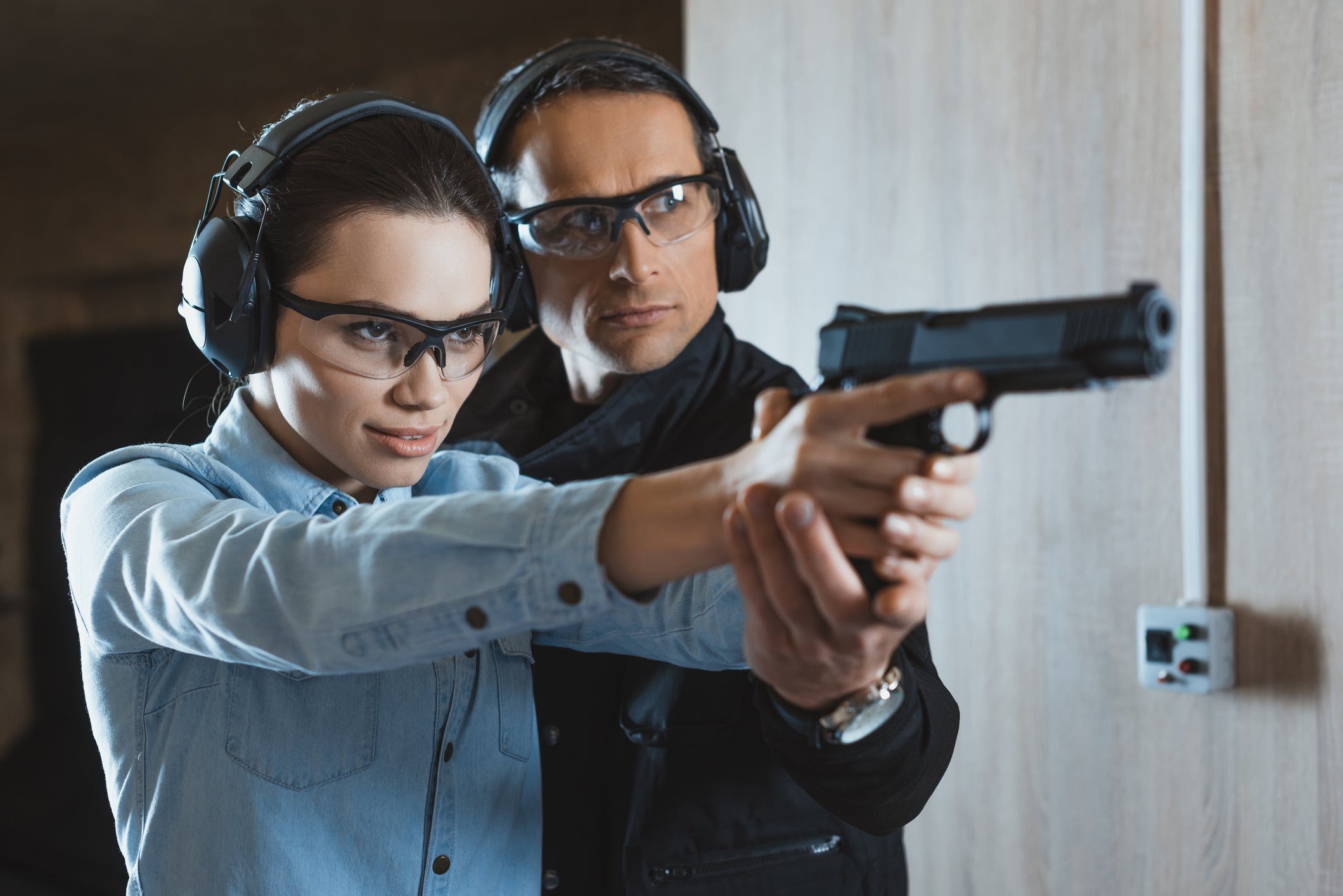Quick Summary: What Safety Equipment Is Required at a Shooting Range?
To meet shooting range safety standards and protect yourself, you need the following equipment:
- ANSI Z87.1+ or MIL-PRF-32432 eye protection
- Earplugs or earmuffs with at least NRR 25
- High-collared, snug-fitting clothing
- Closed-toe footwear
- Optional gloves and headwear for added protection
This guide will break down what to wear, which standards to look for, and how to stay OSHA-compliant during every range visit.
Why Shooting Range Safety Gear Matters
Every time you step onto a shooting range, you expose yourself to several hazards — high-decibel noise, hot brass, flying debris, and gunpowder residue. These aren’t just minor irritants. They’re safety threats that could lead to permanent injury.
Whether you’re new to shooting or a trained professional, following strict gear protocols protects you and those around you.
Eye Protection: What to Wear and Why
The Risks to Your Eyes
- Ricocheting fragments
- Ejected shells or casings
- Gunpowder blowback
- Dust and debris
Eye injuries are one of the most common preventable accidents at gun ranges.
Approved Standards for Eye Safety
- ANSI Z87.1+: Required for industrial impact protection
- MIL-PRF-32432: Military-grade ballistic standard for high-impact environments
Features to Look For
- Wraparound lenses for full peripheral coverage
- Anti-fog and anti-scratch coatings
- UV protection for outdoor use
- Over-the-glass (OTG) designs for prescription wearers
Shop: Ballistic Safety Glasses – ANSI Z87.1+ Certified
Hearing Protection: What Works Best for Shooters
Understanding the Danger
Gunfire exceeds 140 dB — enough to cause instant, irreversible hearing loss without protection. OSHA mandates hearing protection for any exposure above 90 dB over 8 hours, and gunfire is far beyond that.
Choose Based on Range Type
- Indoor ranges: Use earmuffs or dual protection
- Outdoor ranges: Earplugs or electronic muffs may suffice
Types of Hearing Protection
- Earplugs: Foam or reusable silicone; NRR 25+ minimum
- Earmuffs: Consistent protection with higher coverage
- Electronic muffs: Ideal for communication and advanced sound management
Pro Tip: Dual protection (earmuffs + earplugs) provides the highest noise reduction and is recommended in most indoor environments.
Shop:
Proper Shooting Range Clothing
What to Wear
- High-collared shirts to block hot brass
- Long pants for full skin coverage
- Closed-toe shoes (preferably with grip)
- Brimmed hat or cap for deflection
Avoid These Items
- V-neck or loose-neck shirts
- Shorts, skirts, flip-flops, or sandals
- Jewelry or anything dangling that could snag
Women’s Gear Considerations
Women should opt for snug tops, tie long hair back, and avoid makeup that may react to heat or sweat during shooting.
Gloves: An Added Layer of Protection
Though not mandatory, tactical shooting gloves are recommended for:
- Grip enhancement
- Slide and recoil protection
- Protection from hot barrels and spent casings
Look for cut-resistant or impact-resistant gloves with dexterity and touchscreen capability.
Shop: Cut Resistant Gloves
Indoor vs. Outdoor Range Gear: What Changes?
| Feature | Indoor Range | Outdoor Range |
|---|---|---|
| Sound Intensity | Higher; echoes increase dB | Lower; open air disperses sound |
| Light Conditions | Dim, artificial light | Bright sunlight; glare possible |
| Footwear | Slip-resistant needed | Rugged soles preferred |
| Eyewear | Anti-fog crucial | UV protection essential |
OSHA & NRA Shooting Safety Guidelines
Regulatory Backing
- OSHA 29 CFR 1910.95 requires hearing protection when noise levels exceed safe limits.
- NIOSH recommends dual hearing protection for gunfire exposure.
- NRA enforces mandatory eye and ear protection at all sanctioned shooting ranges.
Additional Smart Gear to Consider
- Respirators for indoor lead exposure or poor ventilation
- Disposable Coveralls for clean-up or outdoor prone shooting
- Tactical belts and holsters for secure storage
- Range bags to organize PPE and supplies
Shop:
Checklist: Shooting Range Safety Gear
- ANSI Z87.1+ rated eye protection
- NRR 25+ earplugs or earmuffs (or both)
- Long pants, high-neck shirts, closed-toe shoes
- Hat or cap
- Tactical gloves (optional)
- Extra batteries (for electronic muffs)
- Range bag for organization
- Spare PPE in case of damage or dirt
People Also Ask (FAQ)
What safety gear is mandatory at a shooting range?
Most ranges require ANSI Z87.1+ eye protection and NRR 25+ hearing protection. Closed-toe shoes and proper attire are also expected.
What’s the best eye protection for shooting?
Ballistic-rated glasses with wraparound design, anti-fog coating, and ANSI Z87.1+ certification are the best choice.
Are foam earplugs enough for gun ranges?
They can help but should have a high NRR. For maximum safety, combine them with earmuffs in indoor ranges.
Why can’t I wear a tank top at the shooting range?
Hot brass can fall into open shirts, causing burns. Ranges typically require high-collared clothing to prevent this.
Do kids need safety equipment at shooting ranges?
Yes. Children must wear properly sized ear and eye protection and comply with all safety rules.
Conclusion: Shoot Smart, Stay Safe
Proper safety gear isn’t optional — it’s essential. By wearing certified eye and ear protection, following clothing guidelines, and understanding the differences between indoor and outdoor gear, you ensure every visit to the range is safe and enjoyable.
Visit eSafetySupplies.com for a full range of shooting PPE, including ballistic eyewear, high-NRR earmuffs, protective gloves, and more — all compliant with OSHA, NIOSH, and NRA guidelines.
About the Author: Mick Chan
Mick Chan has been in the Safety Supplies industry for over 15 years. As a seasoned expert in OSHA compliance and safety product procurement, Mick brings practical insight to help businesses meet workplace safety standards with confidence. He graduated from Cal State LA in 2013 with a Bachelor’s in Business Administration, and was born and raised in San Gabriel Valley, a suburb of Los Angeles, California.

